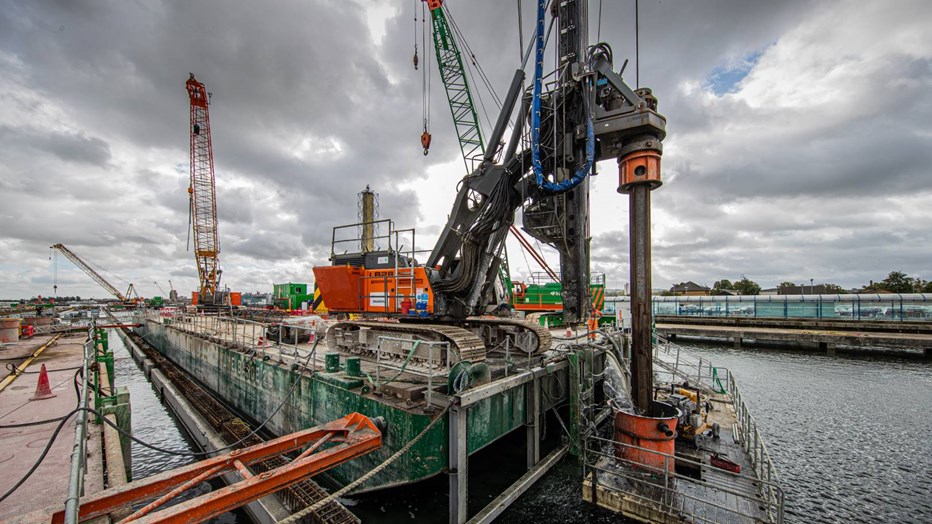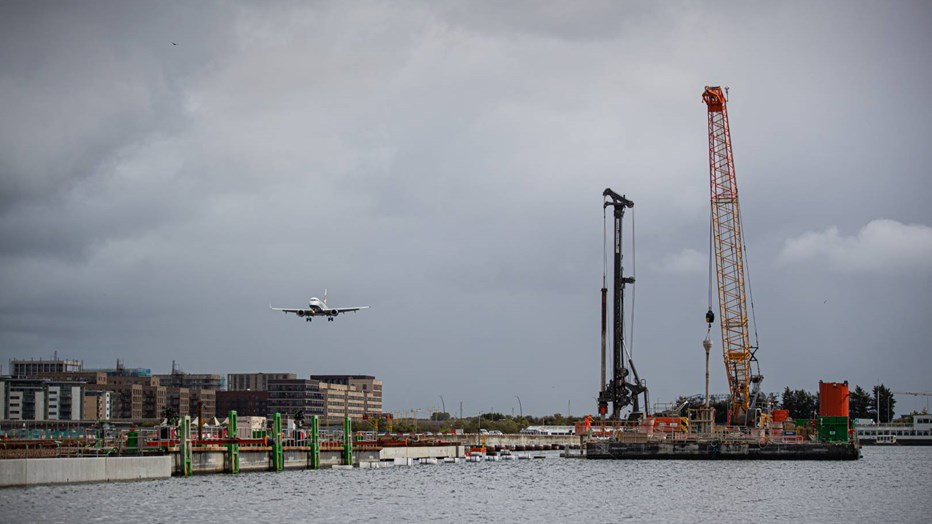The project
London City Airport, located just eight miles to the east of the City on the site of the old Royal Docks, has seen steady growth in passenger numbers since 2010.
The airport infrastructure was in need of significant development to keep pace with anticipated future passenger demands.
The ambitious project required the construction of a 75,000m2 concrete deck creating new ‘land’ on which to build the new terminal infrastructure and a parallel taxiway – the size of 11 football pitches. Cementation Skanska was contracted to carry out marine piling work by the project’s main contractor, BAM Nuttall, as part of the first stage of the City Airport Development Programme.
Site redevelopment was made more complex due to the intricate geology on which the airport is built, and the need to restrict work to specific hours, often at night, to minimise passenger and operational disruption.
The challenge
The geology underlying King George V Dock is complex and highly variable due to the presence of multiple fault zones within the chalk and the Thanet Sands. Our technical specialists, integrated within the project team, played a vital role in developing the approach used to design and construct the piles.
With the need to concentrate activity to restricted hours, we were conscious of the potential impact this could have on the safety of the site team. It was vital to minimise fatigue, particularly for those working on specially designed barges on the water in the dock, in all weathers. In addition to normal health and safety procedures, we trialled the use of Readiband technology to monitor the effects of fatigue for people working extended nightshift periods. This data was used to plan optimal rest periods between different shift patterns.
The solution
- Geophysics survey: pioneering specialist techniques and processes were used to help understand the geology in detail. Working alongside expert partners Sand Geophysics, Reynolds International and Geotechnical Consulting Group, we deployed 3D ground modelling and latest geophysics technology and analysis to produce 3D pictures of the fault structures and the interface between different soil types. This allowed us to design and construct piles safely in the affected areas of the site.
- Complex design process: the design process for the marine piling works is one of the most complex in Cementation Skanska’s history. The full design for the piles was extensive (the initial design document was in excess of 10,000 pages) and was required to accommodate multiple dead, live and dynamic load combinations. Working closely with supply chain partners London Concrete, our concrete mix was designed to allow for the time needed to transport the concrete from the batching plant to the dockside and from the dockside, across the water to the piling barges and into the piles, while remaining stable during placement. This was vital to avoid risk of static and dynamic segregation of the concrete during this unusual and extended period of delivery, double handling, and final placement.
- Large scale use of polymer support fluid: our design incorporated polymer support fluid, a greener and more sustainable support fluid than the more commonly used bentonite. We believe this is the first large scale use of polymer support fluid for piling on a marine project in the UK. If used properly, polymer fluids offer many advantages over their bentonite counterparts, including improved foundation performance, smaller site footprint, reduced environmental impact and simpler mixing and final disposal. The use of any support fluid on such scale and in challenging conditions, necessitated the manufacture of a number of one-off bespoke fabricated items by our specialist in-house Fabrications team, such as ‘bathtubs’ – temporary upper attachments to the pile casings used to maintain polymer fluid levels and ground stability during excavation of the pile bores.
Outcome
During the course of the two-year project, the team installed 1000 marine piles ranging from 1050mm to 1200mm diameter and up to 35m deep (23m below dock bed level). Information gathered during the installation of so many piles will be valuable for future construction projects in the local area, both for Skanska and others in the industry.
The project was completed on time and on budget, in Spring 2020. At the time of completion this was the largest inshore marine works in the country and the largest marine piling project to date for Cementation Skanska.



